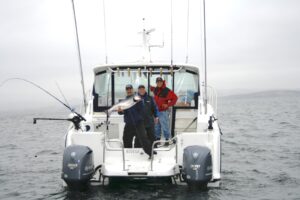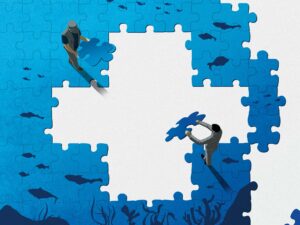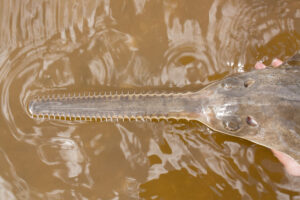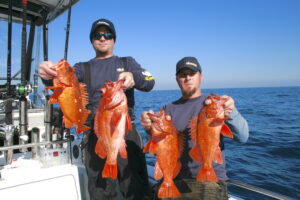A few years ago, I wrote about a recreational-fishing program that brought together the recreational-fishing industry, the conservation community and the commercial-fishing industry, as well as the scientific community, with the goal of improving the quality of recreational fisheries. The program was called FishSmart, and it focused on reducing the impact of recreational fishing through a combination of changes to regulations, angling practices and the development of new tackle. As I mentioned earlier as a form of complete disclosure, I was involved in the steering committee for FishSmart and have been asked to continue my involvement in the next phase.
The first phase of FishSmart concentrated on changes to regulations that had some impact on angling practices. The current phase is focusing on the development of new tackle that will improve the viability of fish being released. Mike Nussman, president of the American Sportfishing Association, which represents the sport-fishing industry, points out, “In salt water, the number of released fish exceeds 200 million annually, and with increasing regulations such as size limits, bag limits and seasons, this number is sure to grow.”
Obviously, with high numbers of releases, even small percentage changes in the mortality rates result in substantial numbers of fish surviving. Nussman further notes: “One of the keys to successful catch-and-release efforts is having the right kind of tackle that improves the chance that released fish will live. The overall FishSmart program is designed to address this and other fisheries issues, such as angler education, head-on.”
Phase One was an exercise in getting a diverse group of stakeholders involved in the management process and ultimately influencing the outcome of decisions that affected an important recreational species. While it was successful, that process needs to be replicated with other species that are valuable to the recreational-fishing industry. In 2011 and 2012, FishSmart collaborated with NOAA Fisheries and the Atlantic States Marine Fisheries Commission to produce a series of national and regional workshops to assess the recreational fisherman’s knowledge concerning the survival of released fish. Russ Dunn, NOAA Fisheries Recreational Fisheries national policy adviser, strongly supported the FishSmart Tackle program, stating, “FishSmart is a great example of hands-on action by anglers for real conservation gains by improving the survival of released fish.”
This phase was announced at this past summer’s tackle industry show, ICAST, an acronym for International Convention of Allied Sportfishing Trades. At this year’s show, ASA launched a new category for the Best of Show competition. In the New Product Showcase, they added a FishSmart Tackle category. This program is designed to recognize tackle and gear that help to increase the survival of released fish. The program will recognize those innovative products within the industry to help the tackle makers promote the product to the recreational-fishing public.
The winner of this year’s ICAST FishSmart Tackle category was a product called SeaQualizer, which was developed by a Florida company called Finovation Inc. This product was covered by George Poveromo in his column last year (saltwatersportsman.com/seaqualizer). The device is designed to overcome barotrauma by returning fish to certain depths without having to puncture their air bladder. During the early FishSmart discussions by the steering committee, dealing with barotrauma was determined to be one of the toughest release problems for fish brought up from great depths. It appears that this device will go a long way toward dealing with that problem.
The FishSmart Tackle portion of this program is designed to showcase and promote tackle and gear that increases the survival of released fish. The FishSmart program consists of:
• Expanding our knowledge and understanding of released-fish survival.
• Developing and employing new technologies and equipment where necessary to enhance released-fish survival.
• Promoting the adoption of improved catch-and-release techniques to anglers.
• Developing innovative practices, equipment and management approaches to prevent the catch of unwanted fish.
The FishSmart concept has been successful because it gets the end-users of the resource involved in controlling their own destiny. All the users of our natural resources are being held responsible for the stewardship of those resources. Sportsmen all across this country have always been conservation-minded, and this program is where the rubber meets the road. Success for the average fisherman is really dictated by the abundance of the target fish, since anglers use the least-efficient harvesting gear. Getting anglers involved in making sure there is an abundant resource is a smart move. Giving them the tools to get the job done is even smarter.









